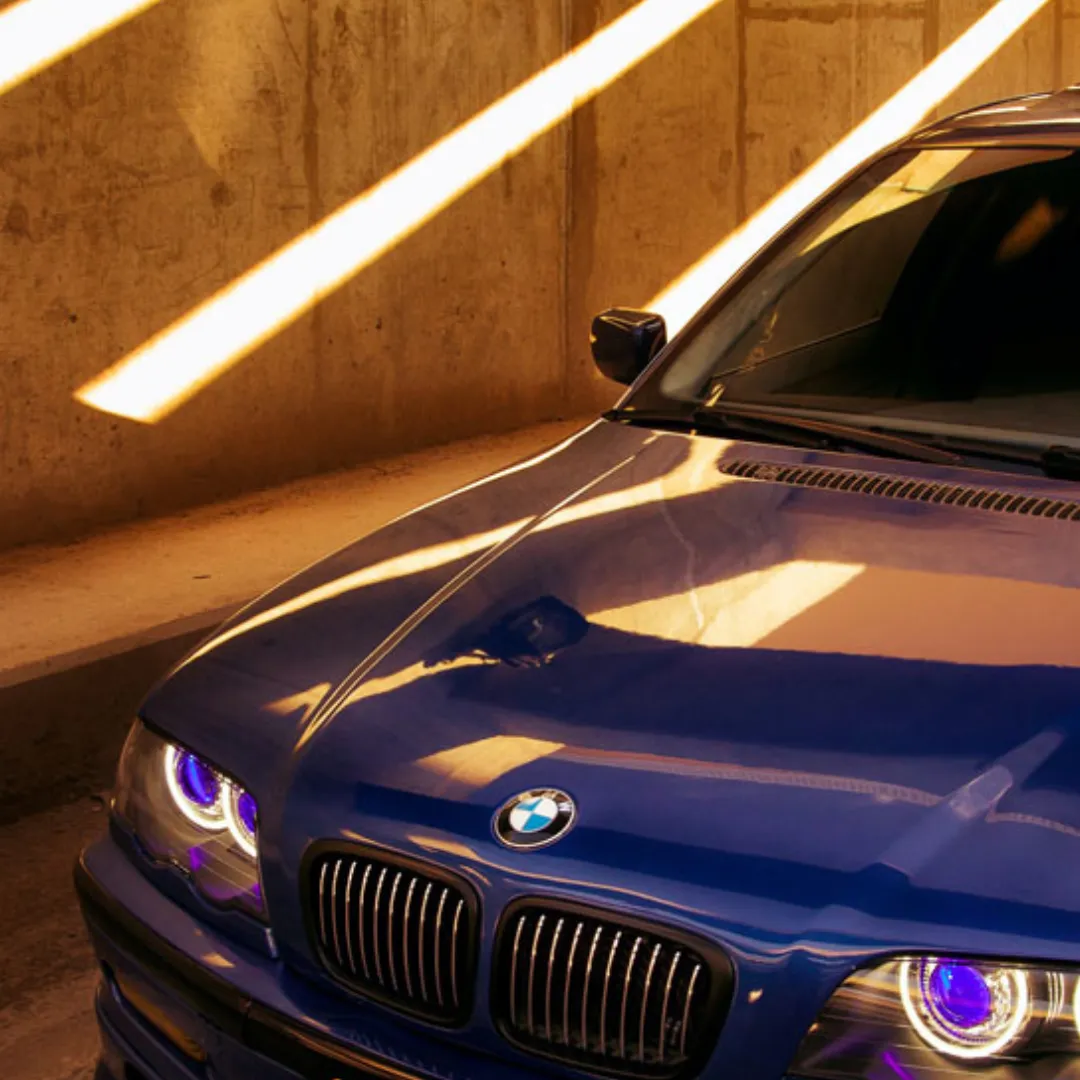the ultimate e46 enthusiasts guides

What to Look Out for When Buying an E46
What to Look Out for When Buying an E46
The BMW E46 is a beloved icon among automotive enthusiasts, celebrated for its perfect balance of performance, luxury, and timeless design. If you’re in the market for one of these classics, you’re in for a treat. However, buying an E46 requires a keen eye and thorough inspection to ensure you’re getting a vehicle that will provide the joy and reliability you expect. Here’s an in-depth guide on what to look out for when buying an E46:
1. Inspect the Subframe for Cracks
One of the most critical areas to inspect on the E46 is the rear subframe. This model is notorious for developing cracks in the subframe, which can lead to serious structural issues if left unchecked. Here’s how to inspect it:
Visual Inspection: Use a flashlight to thoroughly inspect the rear subframe mounting points. Look for any visible cracks or signs of stress.
Listen for Noises: During a test drive, pay attention to any unusual clunking or knocking noises from the rear of the car, as these can be indicators of subframe issues.
2. Check Bushings
Worn-out bushings can affect the handling and ride quality of the E46. Key areas to inspect include:
Control Arm Bushings: Look for any cracks or signs of deterioration in the control arm bushings.
Differential Bushings: Check the differential bushings for wear, as these can also contribute to a clunky ride.
Subframe Bushings: Inspect the subframe bushings for signs of wear and tear.
3. Valve Cover Leaks
The M54 engine in the E46 is prone to valve cover gasket leaks. Inspect the engine bay for oil leaks around the valve cover. If there’s a significant amount of oil around the valve cover, it’s likely that the gasket needs replacing.
4. Inspect Coolant Lines
The E46 is known for its cooling system issues. Brittle and aging coolant lines can lead to leaks and overheating. Here’s what to do:
Visual Inspection: Check the condition of the coolant lines and hoses. Look for any cracks, swelling, or brittleness.
Coolant Level: Ensure the coolant level is within the recommended range and that the coolant itself is clean and free of debris.
Radiator: Inspect the radiator for any signs of leaks or damage.
5. Suspension and Steering Components
A thorough check of the suspension and steering components is crucial for ensuring a smooth and safe ride. Look for:
Shock Absorbers and Struts: Check for any signs of leakage or wear.
Ball Joints: Inspect the ball joints for play and wear.
Tie Rods: Ensure the tie rods are in good condition and there is no excessive play in the steering.
6. Brakes
The braking system is vital for safety. Here’s what to inspect:
Brake Pads and Rotors: Check the thickness of the brake pads and the condition of the rotors. Look for any grooves or warping.
Brake Lines: Inspect the brake lines for any signs of cracking or leaks.
Brake Fluid: Ensure the brake fluid is at the correct level and is clean.
7. Electrical System
Make sure all the electronic components inside the car are functioning correctly. Test all switches and buttons, including:
Windows and Mirrors: Ensure the power windows and mirrors operate smoothly.
Climate Control: Test the air conditioning and heating systems.
Check the radio, CD player, and any other electronic features.
Dashboard Lights: Make sure all the warning lights turn on briefly when starting the car and then turn off.
8. Engine and Transmission
Inspect the overall health of the engine and transmission:
Engine Performance: During a test drive, ensure the engine runs smoothly without any unusual noises or vibrations.
Transmission: Check for smooth shifting in both automatic and manual transmissions. Look for any signs of slipping or rough shifts.
Engine Codes: Use an OBD-II scanner to check for any stored fault codes.
9. Interior and Exterior Condition
A well-maintained interior and exterior indicate good overall care. Inspect for:
Interior Wear: Look for wear and tear on seats, carpets, and trim. Check for any unusual odors, which could indicate water leaks.
Exterior Paint: Inspect the paint for any signs of fading, rust, or previous repairs. Look closely at panel gaps to check for accident repairs.
Lights: Ensure all headlights, taillights, and indicators are functioning properly.
10. Look for Service History
A well-documented service history can provide valuable insights into how well the car has been maintained. Look for records of:
Regular Maintenance: Ensure the car has received regular oil changes, filter replacements, and other routine services.
Major Repairs: Check for records of any major repairs or part replacements, such as the cooling system, suspension components, and gaskets.
Mileage: Compare the service records with the odometer to ensure the mileage is accurate and consistent.
Buying an E46 can be a rewarding experience if you know what to look for. By thoroughly inspecting the subframe, bushings, valve cover, coolant lines, suspension, brakes, electrical system, engine, transmission, and overall condition, you can ensure you’re investing in a vehicle that will bring you joy and performance for years to come.
At Garage46, we share your passion for the BMW E46 and are here to help with any pre-purchase inspections or maintenance needs. If you’re considering adding an E46 to your collection, feel free to reach out to us for expert advice and support. Happy hunting!
CONTACT US
The only shop dedicated to the BMW E46.
4a Exchange Drive, Pakenham VIC 3810
+61 406 305 140
WORKSHOP HOURS
Monday: 8am - 4pm
Tuesday: 8am- 4pm
Wednesday: 8am - 4pm
Thursday: 8am - 4pm
Friday: 8am - 4pm
Sat: Appt only
QUICKLINKS



@ 2025 Copyright GARAGE46. All rights reserved.
